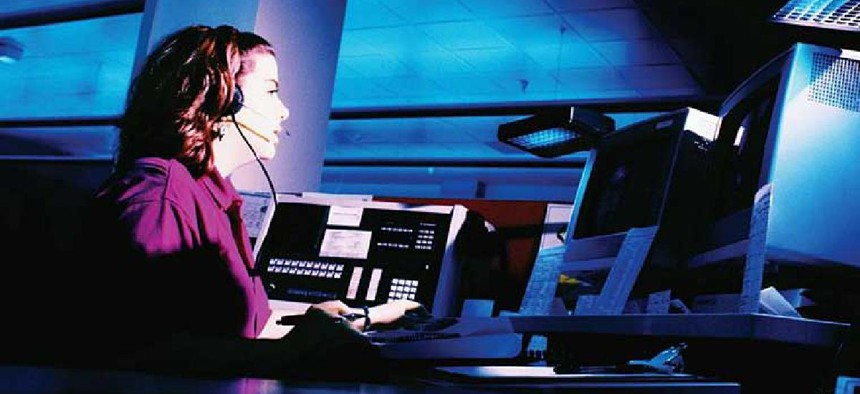NG911: Are we there yet?


Connecting state and local government leaders
With Apple's announcement that its upcoming iOS 12 will share location information with 911 centers, communities are getting closer to the next generation of emergency communications.
When Apple releases the final version of iOS 12 later this year, it will allow users in the United States who call 911 to automatically and securely share their location data with first responders – something that has been problematic since the advent of mobile phones.
Apple partnered with RapidSOS on the technology. The feature, which will be built into iOS 12, connects with the RapidSOS NG911 Clearinghouse, a free IP-based service for public-safety organizations that acts “as a data pipe from any device connected directly into the software systems that are running at 911 centers,” RapidSOS CEO Michael Martin said. “We built this data link into every major public-safety software system so that the 911 centers don’t have to do anything. It’s almost like a software patch.”
He’s quick to note that this feature does not replace existing automatic location identification processes 911 centers use. “We are supplementing the legacy infrastructure with a rich data feed that’s more compatible with mobile devices,” Martin said.
“For the customer, they just dial 911 like they normally would,” he added. “For the 911 center, they don’t have to do anything either. All this data comes through their existing software systems, and they just get that location appearing on their screen.”
The current 911 system's landline infrastructure is not designed to receive real-time location feeds from a moving device, so the GPS in mobile devices can help pinpoint callers’ locations, Martin said.
GPS, however, does has limitations, said Brian Fontes, CEO of the National Emergency Number Association (NENA). “Oftentimes in buildings, GPS may not work as well,” Fontes said. “If you’re by a window, it may work just fine….. I’m not diminishing GPS at all. All I’m saying is that this is another tool to be able to improve access by individuals calling 911 from a wireless device.”
Earlier this year, a test of similar location technology in Google’s Android smartphones showed that the Android Emergency Location Service through RapidSOS’ NG911 Clearinghouse was more accurate and faster than traditional location methods. Currently, 99 percent of Android 4.0 and later devices support ELS, which has been activated in Europe. The European Emergency Number Association estimates that 7,500 lives could be saved if it’s implemented throughout the European Union.
Overall, the next-generation 911 market is expected to grow as work continues on building out IP-based NG911 systems, which will replace the existing landline-based, circuit-switched networks that handle voice and very little data, making it tough to implement programs such as text to 911. In 2011, NENA approved the i3 architecture, which provides the framework for implementing NG911 systems.
But the clearinghouse is not merely an interim solution while the networks are established, Fontes added. RapidSOS’ NG911 Clearinghouse is i3-compliant so that Apple and Google systems will be able to interface with NG911. The two capabilities are distinct, however. The i3 architecture is designed to improve location accuracy, while NG911 is an IP-based system that can interact with a variety of systems to move data to the appropriate public-safety answering point.
This NG911 technology also meshes with the work that AT&T and the First Responder Network Authority are doing to build out FirstNet, the country’s first wireless broadband network dedicated for use by emergency responders.
“As more and more subscribers join the FirstNet network and they’re capable of having platforms -- either Android or iOS -- that enable improved location accuracy, it certainly will be able to help identify the location of that policeman or fireman or EMS professional,” Fontes said.
The location technology could speed emergency response times by 30 seconds on average, which is about how long it takes for 911 calls from mobile phones to go through a complex routing process that ultimately approximates the caller’s location, Martin said. With 80 percent of the 240 million emergency calls in the United States coming from mobile phones each year, time is of the essence.
The Federal Communications Commission’s Live Call Data Reporting Template required that by April 3, all wireless providers must achieve location accuracy of within 50 meters for 50 percent of wireless calls. That number increases to 70 percent by April 3, 2020, and to 80 percent the next year. In a 2014 notice of proposed rulemaking, FCC estimated that a one-minute decrease in response times could save more than 10,000 lives per year.
“Data flow around most 911 calls in the United States is limited to 512 bytes of data, and I’ll just put that into perspective for you,” Martin said. “The very first transatlantic telegram in 1868 between the queen of England and President Buchanan was 617 bytes of data," he said. "One hundred and fifty years later, with an iPhone in your pocket, and when you call 911, you get less information than we transmitted back in the middle of the 19th century"




